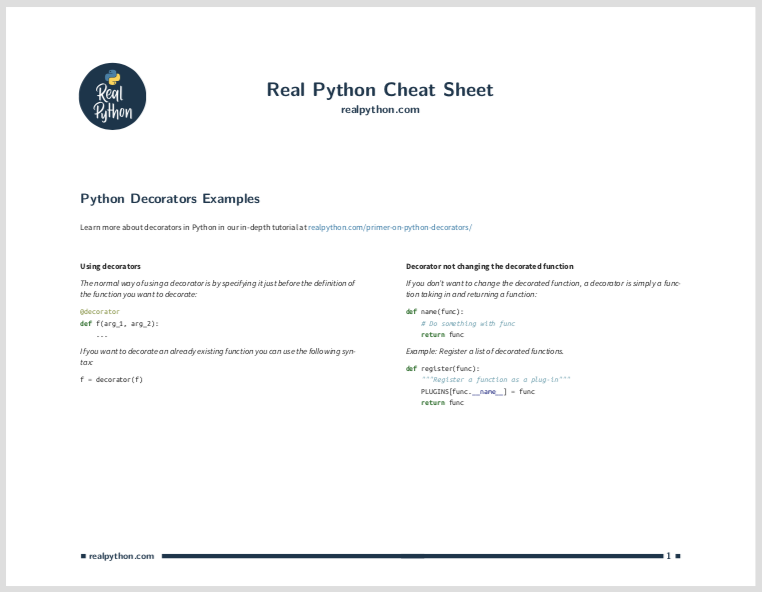This video concludes the section on Python functions and gives you a review of what has been covered up to this point. Here’s what you learned so far:
- Functions can return a value based on their given arguments
- Functions are first class objects and they can be accessed inside lists or dictionaries
- How do define functions inside of other functions
- How to call and return inner functions
Now that you understand how functions work in Python, you’re ready to learn more about decorators.
Free Bonus: Click here to get access to a free “The Power of Python Decorators” guide that shows you three advanced decorator patterns and techniques you can use to write cleaner and more Pythonic programs.
Decorators Cheat Sheet: Click here to get access to a free three-page Python decorators cheat sheet that summarizes the techniques explained in this tutorial.



